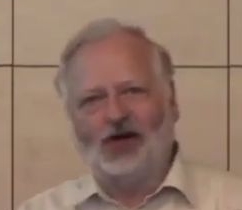Sándor Manno
From 1973, he was an employee of the Hungarian Academy of Sciences' Computer Science and Automation Research Institute (SZTAKI) until his retirement in 2006. Initially, he participated in the operation of the largest domestic computer at the time, the Control Data CDC3300.
From 1975, he taught computer hardware architecture at the Faculty of Programming at ELTE.
Through ELTÉ, he developed audio and video peripherals for the Mathematics Laboratory of the Computer Science Coordination Institute (SZKI), as an external contractor. The most prominent result of this was the Colour Display Processor (CDP). In 1979, the almost TV-resolution colour raster display was the largest in Hungary.
He was a hardware designer of microprocessor network control computers from 1976. Two patents can be linked to the development of the MS700 multiprocessor system, see below. The MS700 was the first network controller of the Hungarian academic network that also supported the X.25 standard, and could also be connected to IBM-type computers.
As a leading designer of microprocessor terminal developments from 1979, he was one of the authors of the patents for the VARYTER, SYSTER and Primo personal computers.
From 1983 he was the lead hardware designer of the embargo-breaking SOKBOX and the TPS-1 type X.25 switching machines. From 1988, the SOKBOX operated as a 128-line exchange of the academic, and later the National Information Infrastructure Development (NIIF) network. The TPS-1 became the last modern product of the Telephone Factory; several hundred units were installed at the end points of the NIIF network, and under the name HBOX (produced by SZTAKI), more than 1000 units were installed in the networks of the National Savings Bank (OTP) and the IBUSZ travel agency, successfully competing with the Western equipment that could be imported at that time.
In the 2000s, he returned to his favorite topics of sound and image processing. With the help of several tenders, he was the chief designer of film and sound restoration equipment. His outstanding achievements are the film rescuer of the Archive, the digital light-sound restoration equipment, the film scanner of the DIMORF tender, and the 6K resolution laser film illuminator. These equipment played an important role in the first Hungarian digital film restoration (Ludas Matyi).
He successfully developed the contactless phonograph cylinder player, which restored recorded music from the movement of the groove image.
Since 2010, he has been working on technical value recovery within the framework of SZTAKI, also giving lectures.
- website (SZTAKI Infocommunication Center)
- Wikipedia
- Colour Display Processor (CDP) képmű
- Meetings with Primo developers (2006, 2009, 2013, 2014)
- Primo and Homelab (iTF event, 2013, video)
- Sándor Manno: The Primo Hardware (iTF event, 2013, video)
- Sándor Manno: Adventurous digital time travel (SZTAKI, 2016, video)
- Sándor Manno: Adventurous digital time travel (SZTAKI, 2017, video)
- Sándor Manno: SOKBOX, or the fruit of forbidden things (iTF event, 2017, video)
- 30th anniversary of the National Information Infrastructure Development (NIIF) Program (iTF event, 2017)
- Sándor Manno: Computer network developments at SZTAKI between 1971-1991 (SZTAKI, 2020, video)
- Interview about the Hungarian home computer called Primo (Post Modem, SZTAKI, 2021, video)
- In 1967, he graduated as an instrument technician from the predecessor institution of the Kandó Kálmán Technical College (KKMF), the Broadcasting and Instrumentation Technical School, which was decisive for his later work.
- Married; has 1 child. (2022 announcement.)
- Hobbies: listening to classical music, collecting old radios and tape recorders.
- From 1976, he registered two patents as a hardware designer for network control computers: in the creation of the MS700 multiprocessor system, which is the subject of the patents, József Kocsis and László Almási were the software developers, while István Szikszai was his colleague in circuit design.
Created: 2022.01.29. 10:34
Last modified: 2024.11.05. 21:09

